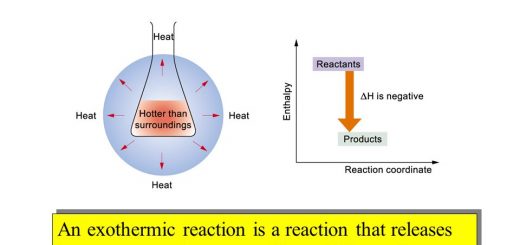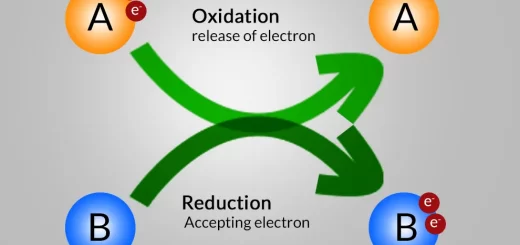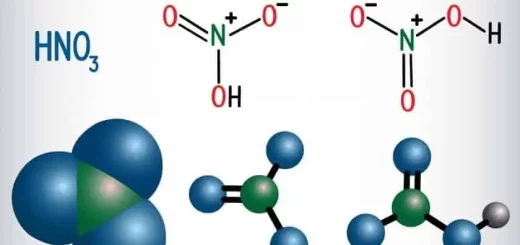Qualitative chemical analysis, Detection for anions of dilute Hydrochloric acid group (Acidic radicals)
Chemical analysis is considered one of the important branches of chemical science which plays an important role in science progress, Also plays an important role in the progress of scientific fields such as medicine, agricultural, food & environmental industries, Chemical analysis is considered the branch of chemistry that deals with the identification of the elements forming a mixture or a compound, besides knowing the percentages of each of those elements.
Chemical analysis
Chemical analysis is used in the medical field to diagnose diseases to estimate the percentages of blood sugar, albumin, urea & cholesterol which makes it easier for the doctor to diagnose and treat, also estimating the amount of the effective substances in medicines.
Chemical analysis is used in the agricultural field to improve the soil properties and crops, It is used to know its properties concerning acidity, basicity, type and concentration of elements present in it, therefore it can be treated by adding suitable fertilizers.
Chemical analysis of ores and products is used in all industrial fields to determine their identity for standard specifications, there is no industry unless there is chemical analysis for raw materials and products.
Chemical analysis is used in the environmental field to identify and measure the harmful environmental pollutants content in water and foods, also percentages of carbon monoxide, sulphur dioxide and nitrogen oxides gases in the air.
If you have an analyzed substance which is needed to identify its constituent elements percentage and kind of bonding together to represent the molecular formula of matter or the group of the compound if it is a mixture.
Kinds of chemical analysis
- Qualitative analysis involves the identification of the constituents of substances whether it is pure (a sample salt) or a mixture of several substances.
- Quantitative analysis aims to estimate the percentage of each essential component of substance.
Accordingly, the practical qualitative chemical analysis should be done first to identify the components of the compound to be able to choose the appropriate quantitive method to analyze them.
Qualitative chemical analysis
The qualitative analysis aims to know the component of a substance whether it is a pure substance or a mixture of several substances:
- If it is a pure substance then it can be identified by their physical constants such as melting point, boiling point & molar mass.
- If it is a mixture, firstly we must separate their components and then identify them by the chemical method using a suitable indicator.
So, the qualitative chemical analysis is considered a series of suitable chosen chemical reactions performed to detect the kind of the main component for the substance based on the changes occurring in the chemical reactions and qualitative chemical analysis includes:
- The analysis of organic compounds involves the identification of the elements and the functional group composing the compound to identify it.
- The analysis of inorganic compounds involves the identification of the ions that form the inorganic compound, it includes the identification of acidic radicals (anions) of salts and basic radicals (cations) of salts.
Detection for anions (Acidic radicals)
The principle of detection the acidic radicals: In the salt solution, the most stable acid, which is less volatile and has a high boiling point, replaces the less stable acid, which is more volatile and has a low boiling point, in its salts, The less stable acid evolves in the form of gas of anhydride, so it can be identified, Anions can be classified into three groups, each group has a certain reagent and these groups are:
- Anions of dil HCl (Carbonate (CO3)2−, bicarbonate (HCO3)1−, Sulphite (SO3)2−, Sulphide (S)2−, thiosulphate (S2O3)2−, nitrite (NO2)1− ).
- Anions of conc. H2SO4 ( Chloride (Cl−), bromide (Br−), Iodide (l−), nitrate (NO3)− ).
- Anions of Bacl2 (phosphate (PO4)3−, sulphate (SO4)2−).
Anions of dilute Hydrochloric acid group
Hydrochloric acid is more stable than the acids from which these anions are derived when the acid reacts with salts of this anion, more stable acid replaces less stable acid which is easily volatile or decomposes to gases which we can detect them using suitable reagents where gently heating is preferred to eject gases.
Salt of less stable acid + more stable acid → Salt of more stable acid + gases of less stable acid
The main experiment ( solid salt + dil HCl)
Carbonate (CO3)2−
Na2CO3 + 2 HCl → NaCl + H2O + CO2
Effervescence takes place and CO2 gas evolved which turns clear lime water milky.
CO2 + Ca (OH)2 → CaCO3 + H2O
CO2 gas is passed for a short time to avoid conversion of calcium carbonate to calcium bicarbonate, so ppt. will disappear, When CO2 is passed on lime water for a long time, no turbidity occurs because carbonate (insoluble in water) will convert into bicarbonate (soluble in water).
Dilute hydrochloric acid is not used to differentiate between salts of sodium carbonate and bicarbonate because dil HCl reacts with sodium carbonate and bicarbonate and effervescence takes place and CO2 gas evolved which turn clear lime water milky.
Salt solution + magnesium sulphate solution → a white ppt is formed on cold soluble in hydrochloric acid.
Na2CO3 + MgSO4 → Na2SO4 + MgCO3
MgCO3 + 2HCl → MgCl2 + H2O + CO2
All metal carbonates are water-insoluble except sodium, potassium and ammonium carbonate and all carbonate are soluble in acids.
Bicarbonate (HCO3)1−
NaHCO3 + HCl → NaCl + H2O + CO2
Effervescence takes place and CO2 gas evolved which turns clear lime water milky, all bicarbonates are soluble in water.
Salt solution + magnesium sulphate solution → a white ppt is formed after heat
2NaHCO3 + MgSO4 → Na2SO4 + Mg(HCO3)2
Mg(HCO3)2 → MgCO3 + CO2 + H2O
Sulphite (SO3)2−
Na2SO3 + 2 HCl → 2 NaCl + H2O + SO2
Sulphur dioxide gas evolved which has a very irritating smell and turns a paper wet with potassium dichromate acidified by sulphuric acid to green.
K2Cr2O7 + 3SO2 + H2SO4 → K2SO4 + Cr2 (SO4 )3 + H2O
Salt solution + silver nitrate solution → white ppt is formed which turn black by heat.
Na2SO3 + 2 AgNO3 → Ag2SO3 + 2 NaNO3
Sulphide (S)2−
Na2S + 2HCl → 2NaCl + H2S
Hydrogen sulphide gas evolved which has a bad smell turns a paper wet with lead acetate to black.
(CH3COO)2Pb + H2S → PbS + 2CH3COOH
Salt solution + silver nitrate solution → black ppt is formed from silver sulphid.
Na2S + 2AgNO3 → Ag2S + 2NaNO3
Thiosulphate (S2O3)2−
Na2S2O3 + 2HCl → 2NaCl + H2O + SO2 + S
Sulphur dioxide gas evolved and yellow ppt. as a result of suspend sulphur in solution.
Salt solution + iodine solution → the brown colour of iodine is removed.
2Na2S2O3 + I2 → Na2S4O6 + 2 NaI
Nitrite (NO2)1−
NaNO2 + HCl → NaCl + HNO2
3HNO2 → HNO3 + H2O + 2NO
Colourless nitric oxide gas evolved which turned reddish brown at the mouth of the tube.
2NO + O2 → 2NO2
Salt solution + potassium permanganate acidified by conc. sulphur acid → the violet color of permanganate is removed.
5 NaNO2 + 2 KMnO4 + 3 H2SO4→ 5 NaNO3 + K2SO4 + 2 MnSO4 + 3 H2O
The scientific base of the identification of the anions in the group of diluted HCl is that diluted HCl is more stable and less volatile than all the acids from which these anions are derived, therefore, diluted HCl can replace any of them in their salts.
Hydrochloric acid is used as a reagent for nitrite anions while hydrochloric acid is not used as a reagent for nitrate anions because HCl acid is more stable than nitrous acid (HNO2), but HCl acid is not more stable than nitric acid (HNO3), Dil HCl doesn’t react with sodium sulphate because HCl is less stable than sulphuric acid (H2SO4), so, HCl acid doesn’t replace sulphuric acid salt solution.
When magnesium sulphate reagent is added to the salt solution of sodium carbonate, a white ppt is formed on cold, while when magnesium sulphate reagent is added to the salt solution of sodium bicarbonate, a white ppt. is formed after heat because the solution of sodium carbonate forms with the solution of magnesium sulphate on cold salt of magnesium carbonate which is insoluble in water, while solution of sodium bicarbonate forms with the solution of magnesium sulphate salt of magnesium bicarbonate which is soluble in water at heating magnesium bicarbonate changes into magnesium carbonate.
Passing of CO2 in lime water for a short time leads to appearing the turbidity, while passing of CO2 in lime water for a long time leads to disappearing the turbidity due to the formation of calcium carbonate which is insoluble in water at passing CO2 for a long time, leads to formation of a soluble calcium bicarbonate.
A yellow ppt ( as a result of suspend sulphur in solution) is formed at the addition of Hydrochloric acid to sodium thiosulphate due to separation and suspension of sulphur in solution.
Iron alloys, oxides, preparation, types, properties and importance
Qualitative analysis, Detection for anions (Acidic radicals) and basic radicals (Cations)



